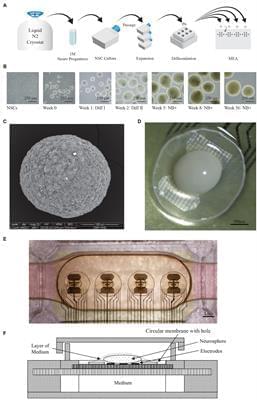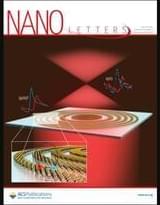This is the question of the origin of our Universe. Every star, every galaxy and every planet we see came from the Big Bang. But what was before it?
Get the latest international news and world events from around the world.
Primordial black holes, dark matter and Apollo era technology
Is dark matter primordial black holes? If so, could we find them using Apollo-era technology on the moon?
A new paper suggests the answer may be yes to both. I interviewed David Kaiser, one of the paper’s co-authors, former student of inflationary cosmology pioneer Alan Guth, and now Professor of Physics and Professor of the History of Science at MIT.
For the preprint of the full paper:
https://arxiv.org/pdf/2310.16877
and other press about the paper.
https://www.lrb.co.uk/the-paper/v46/n…
https://news.mit.edu/2024/exotic-blac…
And some other related papers:
https://journals.aps.org/prl/abstract…
https://arxiv.org/abs/2303.02168
https://arxiv.org/abs/2312.17217
a timeline is below.
00:00 introduction.
00:57 primordial black holes.
3:05 particle dark matter and modified gravity.
6:33 LIGO and EHT
11:03 window of opportunity.
15:16 observaitonal signatures.
20:30 Apollo era tech.
25:19 Star Wars.
25:54 the future.
PBS Space Time
Viewers like you help make PBS (Thank you 😃). Support your local PBS Member Station here: https://to.pbs.org/DonateSPACE
Be sure to check out the Infinite Series episode Singularities Explained • Singularities Explained | Infinite Se… or How I Learned to Stop Worrying and Divide by Zero.
Support us on Patreon at / pbsspacetime.
Get your own Space Time tshirt at http://bit.ly/1QlzoBi.
Tweet at us! @pbsspacetime.
Facebook: facebook.com/pbsspacetime.
Email us! pbsspacetime [at] gmail [dot] com.
Comment on Reddit: / pbsspacetime.
Help translate our videos!
Isaac Newton’s Universal Law of Gravitation tells us that there is a singularity to be found within a black hole, but scientists and mathematicians have found a number of issues with Newton’s equations. They don’t always accurately represent reality. Einstein’s General Theory of Relativity is a more complete theory of gravity. So does using the General Theory of Relativity eliminate the singularity? No. Not only does it concur with Newton’s Universal Law of Gravitation but it also reveals a second singularity, not at the center of the black hole but at the event horizon.
Previous Episode:

‘People have to see it to believe it’: We asked an expert about AR laptops and the challenges in this booming market
And manufacturers are keen to bring additional screens into play, from 2009’s Lenovo’s Thinkpad W700 with its built-in extendable tablet to modern devices like the Asus ZenBook Duo, or Lenovo Yoga Book 9i — and some frankly absurd variants along the way.
But what’s next for the laptop? Will it be Lenovo’s transparent laptop or will AI transform the laptop into handheld devices like how the Steam Deck and ROG Ally X represent a potential reinvention of the gaming laptop? Well, in my opinion, and many others, the next step is augmented reality.
Modern laptops are stuck between two desires, smaller form factors and larger displays. Both of which have their benefits, but you can’t gain more of one without giving up some of the other.

Open and remotely accessible Neuroplatform for research in wetware computing
Wetware computing and organoid intelligence is an emerging research field at the intersection of electrophysiology and artificial intelligence. The core concept involves using living neurons to perform computations, similar to how Artificial Neural Networks (ANNs) are used today. However, unlike ANNs, where updating digital tensors (weights) can instantly modify network responses, entirely new methods must be developed for neural networks using biological neurons. Discovering these methods is challenging and requires a system capable of conducting numerous experiments, ideally accessible to researchers worldwide. For this reason, we developed a hardware and software system that allows for electrophysiological experiments on an unmatched scale. The Neuroplatform enables researchers to run experiments on neural organoids with a lifetime of even more than 100 days. To do so, we streamlined the experimental process to quickly produce new organoids, monitor action potentials 24/7, and provide electrical stimulations. We also designed a microfluidic system that allows for fully automated medium flow and change, thus reducing the disruptions by physical interventions in the incubator and ensuring stable environmental conditions. Over the past three years, the Neuroplatform was utilized with over 1,000 brain organoids, enabling the collection of more than 18 terabytes of data. A dedicated Application Programming Interface (API) has been developed to conduct remote research directly via our Python library or using interactive compute such as Jupyter Notebooks. In addition to electrophysiological operations, our API also controls pumps, digital cameras and UV lights for molecule uncaging. This allows for the execution of complex 24/7 experiments, including closed-loop strategies and processing using the latest deep learning or reinforcement learning libraries. Furthermore, the infrastructure supports entirely remote use. Currently in 2024, the system is freely available for research purposes, and numerous research groups have begun using it for their experiments. This article outlines the system’s architecture and provides specific examples of experiments and results.
The recent rise in wetware computing and consequently, artificial biological neural networks (BNNs), comes at a time when Artificial Neural Networks (ANNs) are more sophisticated than ever.
The latest generation of Large Language Models (LLMs), such as Meta’s Llama 2 or OpenAI’s GPT-4, fundamentally rely on ANNs.

Temperature-Dependent Excitonic Light Manipulation with Atomically Thin Optical Elements
Monolayer 2D semiconductors, such as WS2, exhibit uniquely strong light–matter interactions due to exciton resonances that enable atomically thin optical elements. Similar to geometry-dependent plasmon and Mie resonances, these intrinsic material resonances offer coherent and tunable light scattering. Thus far, the impact of the excitons’ temporal dynamics on the performance of such excitonic metasurfaces remains unexplored. Here, we show how the excitonic decay rates dictate the focusing efficiency of an atomically thin lens carved directly out of exfoliated monolayer WS2. By isolating the coherent exciton radiation from the incoherent background in the focus of the lens, we obtain a direct measure of the role of exciton radiation in wavefront shaping. Furthermore, we investigate the influence of exciton–phonon scattering by characterizing the focusing efficiency as a function of temperature, demonstrating an increased optical efficiency at cryogenic temperatures. Our results provide valuable insights into the role of excitonic light scattering in 2D nanophotonic devices.

Segway’s robot mower spared me from my least favorite chore
I’m sure some of you have looked at robo mowers as Roombas for your yard but, sadly, many of them require you to install a boundary wire around the perimeter of your lawn. And any product that requires you to dig a trench is the opposite of what “low effort” means to me. That’s why I was interested in trying Segway’s Navimow i105, its £945 (around $1,200) GPS-equipped mower which eliminates that busywork. And keeping your lawn neat and tidy is a job that’s all busywork.
Ask a gardener and they’ll tell you the secret to a great lawn is to seed a piece of flat land and then mow it into submission. Regular, militant mowing kills off all the other flora, ensuring only grass can grow until everything looks well-manicured. But that relentless mowing requires a lot of time, a luxury I’ve never had. It’s the sort of job a robot mower was born to do, given it can scuttle around and trim grass without you there.
Segway’s i Series is the company’s latest, more affordable offering compared to its pricier S Series. The new units have a smaller battery and range, with the i105 able to handle areas up to 500 square meters. Unlike some GPS mowers, the i105 is equipped with a forward facing HD camera with a 180-degree field of vision. So while it relies on satellites for positioning, it’ll have enough sense to stop before it clatters into an obstacle. It’s not packing sophisticated computer vision smarts, but it’ll play safe lest it charge into a pet, inattentive family member or prized flower.

Fascinating behavior of “super photons” in the quantum realm
Have you ever wondered what happens when thousands of particles of light merge into a single entity? This phenomenon, known as a “super photon,” has fascinated physicists for years.
Now, researchers have made an intriguing discovery that broadens our understanding of this exotic quantum state.
Dr. Julian Schmitt and his colleagues from the Institute of Applied Physics at the University of Bonn have shown that photon Bose-Einstein condensates, also known as quantum gases, obey a fundamental theorem of physics.

Real Arc Reactor (ionized plasma generator)
Is it real? Well, it’s a real “arc” reactor that generates plasma, but as we explained in the beginning of the video, it’s impossible to create a device that…